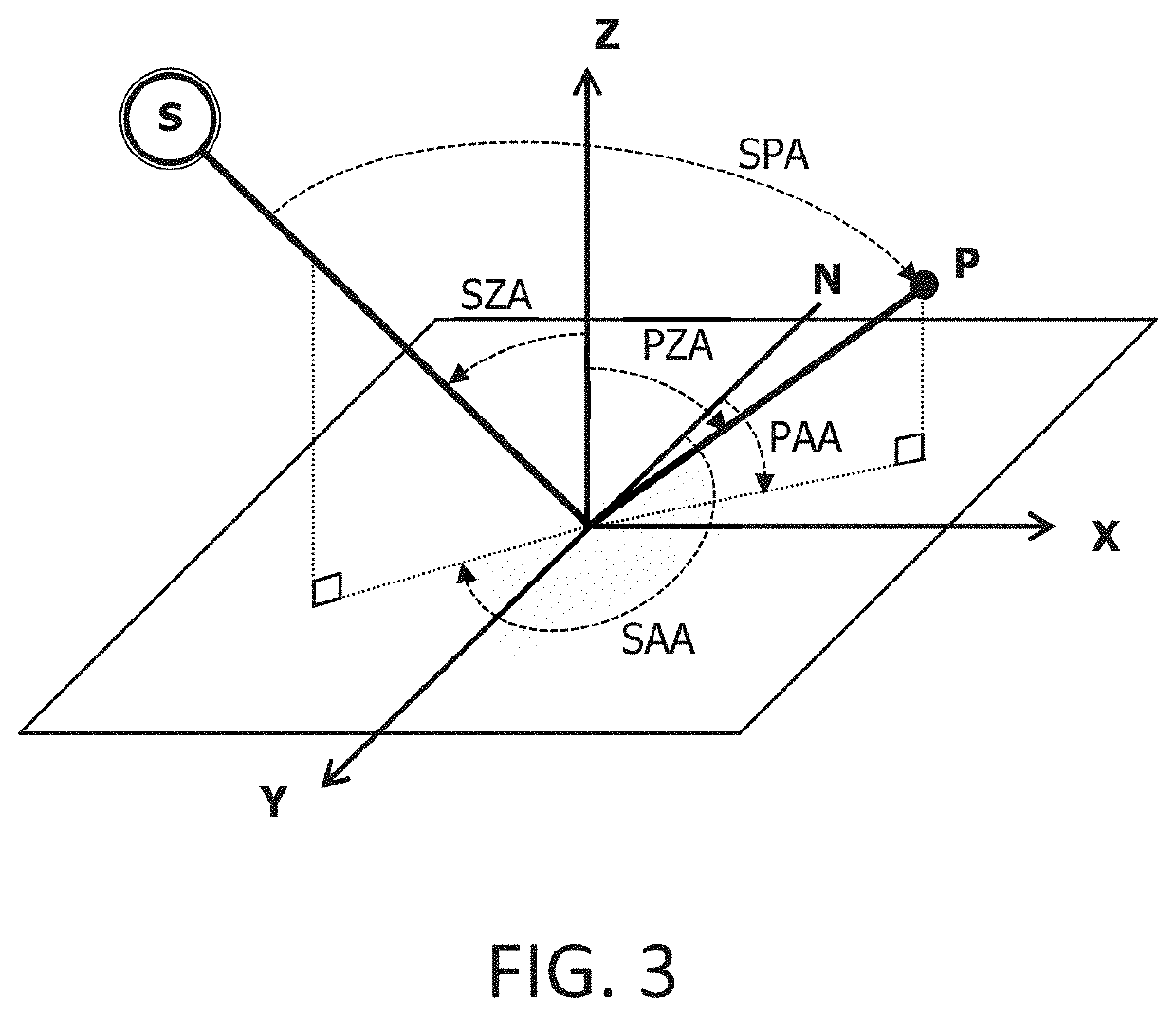System for measuring components of solar radiation
a solar radiation and component technology, applied in the field of solar radiation and atmosphere properties, can solve the problems of high cost, high cost of instruments, and inability to accurately measure the different components of solar radiation, so as to eliminate operating and maintenance costs, reduce costs, and reduce costs
- Summary
- Abstract
- Description
- Claims
- Application Information
AI Technical Summary
Benefits of technology
Problems solved by technology
Method used
Image
Examples
Embodiment Construction
system according to the invention comprises a camera 10, equipped with a hemispherical objective 20 (also called a “fisheye” objective), i.e. a lens with a large angle of field, with a field of vision greater than 180°. The camera 10 includes a sensor 12 capable of capturing light to generate an image, for example a CMOS (Complementary Metal Oxide Semiconductor) sensor or a CCD (Charge Coupled Device) sensor. The sensor 12 comprises on its surface a certain number of pixels (125) on which the light terminates to form an image.
[0059]Advantageously, the camera 10 is located on a horizontal platform, and is located in a place where there is no shading (for example, high up and far from buildings and vegetation). Thus, one can obtain an image of all, or almost all of the sky, without obstacles hiding parts of the sky.
[0060]The camera 10 is oriented along a Z axis which points from the ground towards the zenith.
[0061]Advantageously, the measurement system comprises a protective case 40 t...
PUM
 Login to View More
Login to View More Abstract
Description
Claims
Application Information
 Login to View More
Login to View More - R&D
- Intellectual Property
- Life Sciences
- Materials
- Tech Scout
- Unparalleled Data Quality
- Higher Quality Content
- 60% Fewer Hallucinations
Browse by: Latest US Patents, China's latest patents, Technical Efficacy Thesaurus, Application Domain, Technology Topic, Popular Technical Reports.
© 2025 PatSnap. All rights reserved.Legal|Privacy policy|Modern Slavery Act Transparency Statement|Sitemap|About US| Contact US: help@patsnap.com


